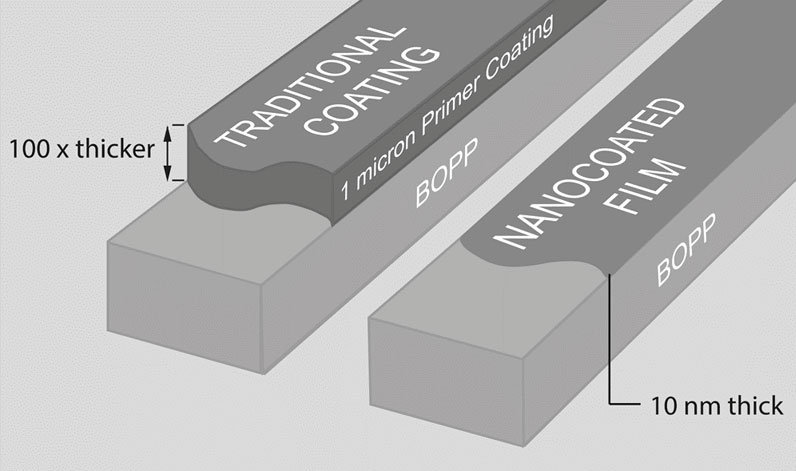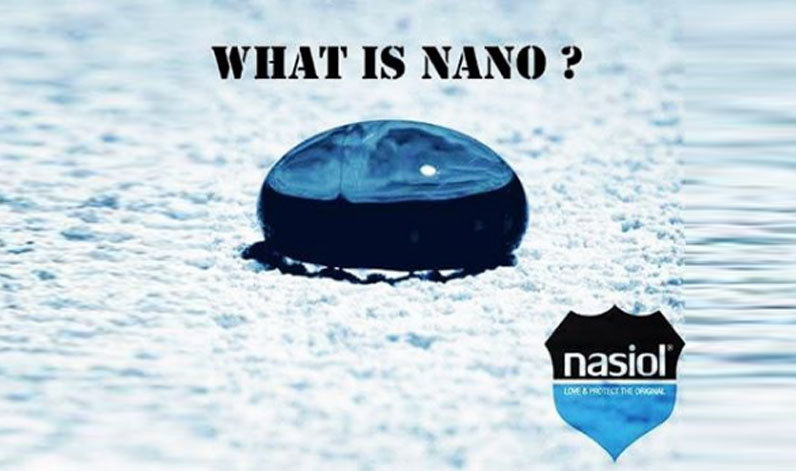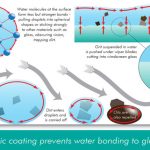A Quick Glance on Topics
- Nano Coating Meaning
- Nano Coating Usage Areas
- Benefits Of Nano (Ceramic) Coating
Nano Coating Meaning
Nano coating is defined as the modification of surfaces within thickness range from a fraction of nanometers to sub-micrometers via chemical compounds consisting of nanometer-scaled particles and useful agents in order to improve functionality or prevent harmful effects of external factors on end-use products.
We’ve all heard the term before, nano coating, or nanotechnology coating.
But what does nano entails, and how does it benefit us?
Nano coating is often used in the automotive sector as a ceramic coating or nano ceramic coating interchangeably.
The purpose of treating the surface with nano-coating is to form a layer that will protect the underlying asset, which is the paint and the clear coating that lies on top of the paint in automobiles.
The usage areas for nano coating base solutions are not only limited to automobiles.
The products made using nanotechnology can be used in just about every sector and industry that can benefit from its ability to provide protection.
In addition to the automobile sector, nanocoatings are popular and widely used in treating the surfaces of textile, aircraft, watercraft, wood, natural stones, electronics, and personal wear.
Nanocoatings aim to protect the applied surface from dirt, water, oil, and staining. And by repelling those particles, the body is kept in its original condition and protects its value.
Nanocoatings are generally available in the liquid form; however, solid forms are also available and widely used.
In addition to providing surface protection, nanotechnology and nano coating based solutions are also in the front lines of fighting against dangerous bacteria that cause life-threatening illnesses.
Specially formulated nano solutions can shield the applied area from the reach of bacteria and viruses.
Since the outbreak of Covid-19, the need for surface protection products, especially those that can kill dangerous viruses on contact, have been in high demand.
Engineers at Nasiol are one step closer to developing a formula that can ward-off harmful bacteria when it makes contact with the applied surface.

Popular Nano Coating Usage Areas
Liquid Repellent Coatings:
This is the most popular form of usage for the nanocoatings to repel water and other liquids from the surface, whether automobile, clothing, or wood panels.
This type of application aims to prevent liquid penetration from making the surface dry and preventing staining that is often caused by liquid materials.
For example, people usually apply this type of coating on their wood-based materials such as furniture and decks to prevent cracking and early aging due to water damage. This type of coatings is also known as hydrophobic coatings.
Antibacterial Coatings:
The anti-bacterial coatings are designed to prevent the spread of dangerous bacteria and viruses.
There are two types of anti-bacterial coatings. One is to eliminate the bacteria that is already on the surface, and the second is the type of coating where it wards-off and kills the bacteria when it makes contact with the applied surface.
Rust Prevention (Anti-Corrosive) Coatings:
Since nanocoatings can prevent the surface from scratching and staining, its protective layering can also prevent the underlying material from rusting due to its exposure to oxygen and water.
The major areas that the anti-corrosive nanocoatings used are in boating and ships because salt water is known to cause significant damage to metallic materials.
Graffiti Prevention:
Graffiti can be the work of art that is pleasing to look at, or it can be an eyesore when done intentionally for malicious or mischievous reasons.
Graffiti on the school walls, school busses, trains, bridges, and walls on public property is something we have used to see.
Cities and public schools are already fighting tight budgets, and dealing with graffiti takes a toll on the resources of many of the city governments around the globe.
Nanocoatings can help schools and governments fight illegal graffiti by coating the surfaces with a unique solution that will make the cleaning process easy.
A non-treated surface will need more man-hours and special chemicals to remove the graffiti.
A surface treated with an anti-graffiti solution will make cleaning a one-man job with only water to remove the graffiti.

3 Main Benefits of Nano (Ceramic) Coating?
1) Ease of Cleaning:
A primary reason for nano coating solutions is their ability to provide a much easier to clean surface. A surface that is not treated with a nano coating will require more chemicals and time to remove the surface's stains.
2) Longevity:
Nanocoatings are not one time only applications. When appropriately maintained, a simple nano treatment can last up to years under the right recommended conditions.
3) Protects the Value:
Since the nanolayer is geared to prevent the material under the layer from getting damaged, it automatically protects its value from depreciation.
For example, when applied to a car, the paint is protected against scratches and discoloration, and when the time comes to sell or trade the vehicle, the body looks new like it just rolled out of the factory line. Learn how to apply ceramic coating correctly.



Leave a Reply